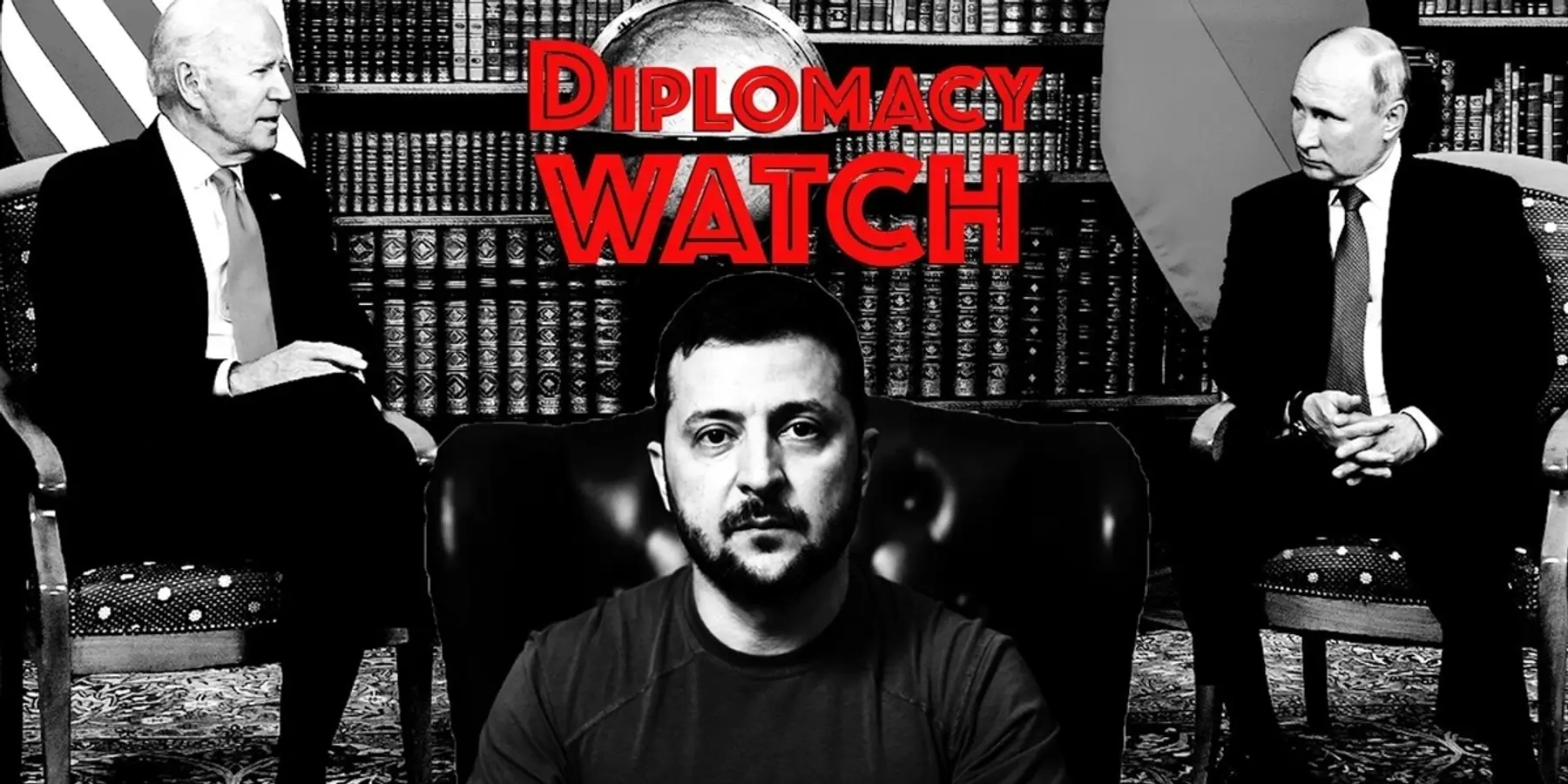As the Ukraine War passed its 1,000-day mark this week, the departing Biden administration made a significant policy shift by lifting restrictions on key weapons systems for the Ukrainians — drawing a wave of fury, warnings and a retaliatory ballistic missile strike from Moscow.
On Thursday, Russia launched what the Ukrainian air force thought to be a non-nuclear intercontinental ballistic missile (ICBM) attack on the Ukrainian city of Dnipro, which if true, would be the first time such weapons were used and mark a major escalatory point in the war.
In a televised address on Thursday, Russian President Vladimir Putin confirmed that Moscow launched a new, hypersonic intermediate-range ballistic missile. He added that the long-range strikes from Ukraine this week have given the regional conflict the elements of a global one, and that Russia could use the missiles against countries that have allowed Ukraine to strike deep inside Russia.
U.S. officials have confirmed that the new Russian missile, called the "Oreshnik," is based on the design of Russia’s longer-range RS-26 Rubezh intermediate ballistic missile (IRBM). It can carry multiple nuclear warheads but was armed with conventional weapons in the Thursday attack.
The new missile was experimental and Russia likely possessed only a handful of them, officials said.
The strike was seen largely as a response to the Biden administration’s authorization for the Ukrainian military to use the American-made ATACMS missile system to strike deeper into Russian territory. On Tuesday Ukraine reportedly used the system to fire six missiles into Russia’s western Bryansk region, which Moscow said it successfully defended.
Ukrainian President Volodymyr Zelenskyy led a months-long effort for NATO authorization to strike deeper into Russia. On Tuesday, according to CNN, he said his military now has the U.S. ATACMS system and its own long-range capabilities, and that “we will use all of this.” The Ukrainian military also struck Russian targets with UK-made long-range Storm Shadow missiles on Wednesday. Some Russian officials warned that the strikes could lead to a “third world war.”
Moscow’s position for months has been that an attack on Russian territory with British, French or U.S.-made missiles would constitute direct warfare against those countries. Russian ambassador to the UK Andrei Kelin doubled down on this threat after Ukraine fired UK-supplied Storm Shadow missiles into Russia on Wednesday.
"Britain and the UK are now directly involved in this war, because this firing cannot happen without NATO staff, British staff as well," Kelin said.
Earlier this week, as an apparent warning to the West, Putin signed an update to Russian nuclear policy that lowers the threshold for a retaliatory strike.
The revised document says Russia could use nuclear weapons in response to a nuclear or WMD strike against Russia or its allied nations, or in response to aggression against Russia or Belarus with conventional weapons threatening their sovereignty or territorial integrity.
The doctrine also declares that an attack by a non-nuclear power supported by a nuclear power is considered a joint attack, and that an attack from one member of NATO would be considered an attack from all members.
The White House said the policy came at no surprise, and that it will not respond with any alteration of its own nuclear policies.
Other Ukraine News This Week:
The U.S. gave Ukraine further slack later on Tuesday, with The Washington Post reporting that Biden approved the provision of antipersonnel mines to Ukraine — undoing his own policy from 2022.
According to CNN, the Americans expect Ukraine to use these mines to defend their own territory, not as an offensive tactic in Russia. Russian forces, on the other hand, have been using similar devices on the front lines since their invasion began in 2022.
Still, Biden’s move could prove controversial, the Post said, citing their indiscriminate nature and a 160-member international treaty banning their use based on an elevated risk to civilians.
The Biden administration’s policy shifts came after a violent weekend of Russian attacks: according to CBS, Moscow launched a drone and missile assault on Ukraine on Sunday, targeting energy infrastructure ahead of the winter and killing scores of civilians.
Biden is just under two months away from exiting office, with the incoming Trump administration having made clear in recent months its intentions to try to end the war.
From State Department Press Briefing on Nov. 18
In Monday’s press briefing, State Department Matthew Miller repudiated the idea of presidents working together across terms when asked about how typical it might be for a lame-duck president to make significant foreign policy decisions like enabling the long-range missiles.
“...the President was elected to a four-year term and the American people expect him to govern for a four-year term and make the decisions that he believes are appropriate,” Miller said. “There is no one who thinks that for the first two months of the next term they’re supposed to continue to carry out the decisions made by this President.”
From State Department Press Briefing on Nov. 19
Miller condemned Russia’s rhetorical responses to the long-range missile attack in Tuesday’s press briefing.
“Since the beginning of its war of aggression against Ukraine, [Russia] has sought to coerce and intimidate both Ukraine and other countries around the world through irresponsible nuclear rhetoric and behavior,” Miller said. “Despite what Russia says, neither the United States nor NATO pose any threat to Russia. Russia’s irresponsible and bellicose rhetoric will not do anything to improve Russia’s security.”
“This policy in itself just highlights Russia’s hypocrisy,” he added. “Russia is suggesting here that they would use or could use nuclear weapons against a non-nuclear state if they undertake the same kind of aggression that Russia itself is inflicting upon Ukraine and its people.”
- I was there: NATO and the origins of the Ukraine crisis ›
- Ukraine’s demographic crisis threatens its future viability as a free state ›
- Poll: Over 50% of Ukrainians want to end the war ›
- Protests lead to another president out the door in South Caucasus | Responsible Statecraft ›
- Putin’s game is hypersonic: Is that why we can’t see it? | Responsible Statecraft ›
















